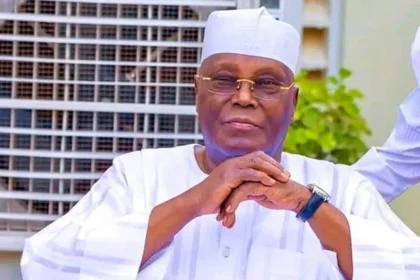• Says Ooni is a product of politics
By Debo Popoola
There have been battles of supremacy recently between some prominent kings in Yoruba land. Specifically, the Alake of Egba and Awujale of Ijebu have been exchanging words in an attempt to establish their supremacy over the other. But Alafin of Oyo, in an interview, has decided to take other Yoruba kings to lecture room with historical references to establish himself as the most supreme of all Yoruba king.
On his relationship with other Yoruba kings
Alaafin says: “Very very cordial. But there have been some controversies concerning supremacy. You see, the issue of who is supreme among the obas is a 20th Century phenomenon. No oba can say he is greater than the Alaafin. Up till now, there is no oba who has come out to make such claims; they only use surrogates. If any oba wants to attack the Alaafin, he uses a baale or another inconsequential element to do that, whereas the Alaafin has come out openly to say he is the head of the Yoruba obas and nobody has controverted that.
“If you go to Sir Lugard’s political memoranda in 1917, he detailed the hierarchy of all the traditional rulers in the north and the south. My father or my grandfather was not there to influence Lord Lugard to write it. If you say Johnson had bias for Oyo, go and see C. R. Neeving, who stated unequivocally and authoritatively that the Alaafin is the supreme oba in Yorubaland. Go to Johnson, see the treaty signed by the Alaafin in 1881, stating, I, Adeyemi I, Alaafin of Oyo, King of Yorubaland.’
“In his letter to the British in 1881, during the internecine wars, he wrote, “I, king of the Yoruba?” There is no dispute over that. I have challenged them to a debate, at least for 10 minutes, but they have run away because the facts are there. Somebody wrote recently that the first settlement was ruled by the first Alake. Do you believe that the first settlement of Yoruba was established by Alake who was established in 1830?
On whether the history of Yoruba people started in 1830
Alaafin says: “The first Alake in Abeokuta, Okukenu, was a Sagbua, a chief of the Alaafin. Go to the book, Egba and her neighbours, written by an eminent professor of history, Professor Saburi Biobaku, page 15, he wrote that the Egba forest laid within the remotest part of the Alaafin Empire, and how the Alaafin superimposed his authority over the Alake and all other Egba traditional chiefs is acknowledged.
“Go to the salary scale of all the obas in 1938, the record of the pay-slips is in the Palace here. Oyo province was constituted on January 14, 1914 and Ife and Ijesa were all under Oyo Province. For purposes of effective administration, Oyo Province was broken down into three, namely Oyo Division of Oyo Province; Ibadan Division of Oyo Province and Ife/Ijesa Division of Oyo Province. And principal obas in these areas were designated district heads.
“In Ibadan, the Olubadan was the district head of Ibadan, Ooni was the district head of Ife, Orangun was the district head of Ila and Owa was the district head of Igbomina. The Alaafin was the paramount head of the whole province, and in ranking, the Aremo, who was the crown prince of the Alaafin, was the district head of Oyo Province. Twenty district courts were opened for the 20 districts in the province, and the Alaafin never sat in any of the district courts, but at the court of appeal over the 20 district courts.
“When there was a problem between Ife and Ijesa, Sir John Macpherson asked the Alaafin to intervene. The Alaafin sent Are Ilugbohun and Alapini and a number of Oyomesi to go and adjudicate. The boundary fixed by the Alaafin at Enuowa still subsists till today. Ditto the dispute between Ife and Ede, Alaafin’s ruling still subsists till today. When Ibadan and Egba quarrelled over Bakasari, the Alaafin settled it and said Bakasari belonged to Ibadan, and he made all the parties to sign an undertaking.
To be specific, there were insinuations that the old Oyo state had to be split into two; Oyo and Osun, because of the supremacy fight between you and the Ooni of Ife.
Alaafin says: “I would not know the inner workings of government. But I want to tell you this: politics brought out the Ooni. There are so many things we cannot cover in the course of this interview. Like I told you, the question of whether the Alaafin is supreme is a 20th Century phenomenon, when Awolowo emerged the premier of the old Western Region. That was when the government propped up the Ooni. And the only way they could do it successfully then was to get rid of the Alaafin, which they did by deposing the Alaafin, and Ooni Adesoji Aderemi on August 8, 1960 was appointed the governor of the Western Region. The governorship thing was to give leverage to a man who never founded any empire.
When they organised the Traditional Rulers’ Forum in Abuja, Yoruba obas were ridiculed. They put all the Emirs on the first row and put Yoruba Obas, including the Ooni on the second row. When I came in, I asked for my seat and they wanted me to go and sit at the back. I just removed one of the tags and sat beside the Sultan of Sokoto. Under the Clifford Constitution in 1922, two Obas represented the whole of Nigeria at the Legislative Council, the Sultan of Sokoto and the Alaafin of Oyo. The Alaafin represented the entire south in Lagos. I left the place and went home, wrote a strongly worded letter to General Jeremiah Useni and copied the late General Abacha. Abacha invited me and I told him that government is a continuum. He reasoned with me and corrected that. The Alake and the Awujale never fought their own cause but I fought mine.
When they asked us for a meeting in Abuja, they asked us to bring our aides for hotel accommodation. The emirs would bring about eight and they put them in suites while they reserved two rooms for me. I just packed to one of the presidential suites. They said but it was not reserved for me, and I said they didn’t have to do that, I did it myself. You see, as the Alaafin, you cannot fear anything.



